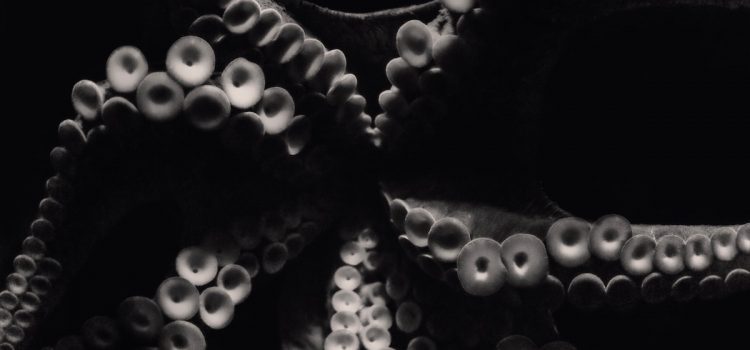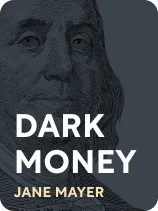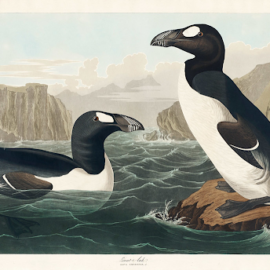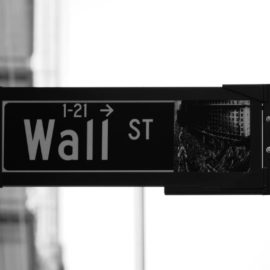

This article is an excerpt from the Shortform book guide to "Dark Money" by Jane Mayer. Shortform has the world's best summaries and analyses of books you should be reading.
Like this article? Sign up for a free trial here.
What on earth is the Kochtopus? How has it shaped politics and economics in America?
The Kochtopus is an informal term used to describe the network of nonprofits that Charles Koch and David Koch funded to spread their free market ideals. In her book Dark Money, Jane Mayer discusses this network, arguing that it does more harm than good.
Keep reading for Mayer’s history of the Kochtopus.
The Kochtopus
According to Mayer, the Koch brothers’ political beliefs were influenced heavily by those of their father, Fred Koch (1900-1967). Fred was a businessman who distrusted government and was strongly in favor of free markets.
According to Mayer, Charles took an interest in spreading his beliefs to others. In the 1960s he became involved with funding and running a school called the Freedom School—later expanded into Rampart College—which taught that taxation was theft, that government should be almost entirely abolished, and that the Civil War should never have been fought because people should have the right to sell themselves into slavery if they wanted to, among other beliefs.
(Shortform note: The Freedom School began as a single-course program on a campus in Colorado before being expanded into Rampart College and later revived as Rampart Institute. Now, Charles Koch is continuing to fund “freedom schools” at institutions like Arizona State University and the University of Arizona. The curricula at these freedom schools are also based on libertarian thought, as at the previous iterations of such centers.)
Charles and David began passionately championing libertarianism, which, at the time, was a fringe belief, explains Mayer. In 1976 Charles funded the Center for Libertarian Studies in New York City, where a conference was held that featured several high-profile libertarian figures. These figures, Charles included, wrote a number of papers calling for a concerted effort by the wealthy to propagate libertarianism among both politicians and the citizenry.
They recommended inventing fake grassroots movements, courting media figures to create a positive public image, and targeting America’s youth since they would be more open to new ideas. One speaker even suggested following the Nazis’ lead in this regard, saying they were able to successfully take over the country because of the youth movement they started.
(Shortform note: The approach Charles and the other libertarians took was appealing because of its great success in Nazi Germany: In particular, the targeting of young people in Nazi Germany proved to be highly effective in indoctrinating children into Nazi ideology. Though it had only 50,000 members in 1933, by 1939 the Hitler Youth included over 90% of the children in Germany. The effects of that indoctrination are visible today, as research shows that anti-Semitism is still much higher in Germans raised during the Third Reich than those who were raised before or after it.)
As the Kochtopus grew, they further advised funding private institutions at highly respected universities so donors could control things like staffing decisions and curricula. Additionally, the speakers—particularly Charles Koch—strongly recommended that these actions be done in secrecy to avoid criticism, a tactic inspired by the John Birch Society. This conference began the creation of a vast donor network of America’s wealthy elite dedicated to the proliferation of libertarian beliefs.
(Shortform note: While the Kochs and their donors set out to turn higher education into a pipeline for conservative-minded thinkers, today many conservatives argue that higher education is actually a hotbed for liberal indoctrination. However, research suggests that people’s political views don’t change much between the time they enter college and the time they leave, indicating that higher education has little effect on students’ overall political leanings.)
Funneling Dark Money: Partisanship in Think Tanks
From the beginning, explains Mayer, the wealthy had to circumvent campaign finance laws and regulations on lobbying groups in order to keep their political spending secret and to continue to enjoy the tax-exempt status of their foundations. Money spent in this way is known as dark money. Groups such as the American Enterprise Institute in the mid-twentieth century directed their efforts into political lobbying but faced criticism from the government, which threatened their tax-deductible status. This led them to make an effort to avoid appearing partisan until the 1970s.
However, in the 1970s, conservatives began redefining what partisanship looked like by portraying well-known nonpartisan news outlets like The New York Times as distinctly liberal and claiming they were just providing a counterpoint to those ideas. This not only made conservative think tanks appear less biased, explains Mayer, but it pushed these previously independent news sources further right as these groups scrambled to add conservatives to their ranks to appear less biased.
This shift of the entire political climate to the right made the ideas of free-market capitalism and libertarianism more mainstream. The wealthy also began funding biased and even fraudulent academic and scientific research through think tanks that supported their political agendas, allowing them to curate the spread of ideas to suit their corporate interests.
(Shortform note: The purpose of think tanks is to push for social change using evidence-based research and ideas. Members of these groups conduct research and present ideas to politicians for consideration in their policies. However, critics point out that many of the groups are staffed by lobbyists or people who are employed by corporations with vested interests in the research the think tanks are conducting. These individuals are able to influence policy decisions with the assumed credibility of scholars and without having to disclose their potential conflicts of interest, and much of their research is industry-sponsored and biased. This may contribute to the negative view of think tanks that many people hold.)
Taking Over American Politics: Richard Fink’s Plan
Mayer explains that the Kochs decided to keep their political influence at the funding level instead of running for office themselves. To this end, Charles Koch hired Richard Fink as his political advisor. According to Mayer, Fink laid out a specific plan consisting of three phases for taking over American politics.
Phase 1: Produce Conservative Ideas
To carry out phase 1, explains Mayer, the Kochs sought to establish a beachhead, or a program at a prestigious university that they could fill with conservative-minded faculty and then grow into much larger programs.
They did so at Virginia’s George Mason University, where they established the think tank called the Institute for Humane Studies, a program aimed at building a new generation of libertarian scholars. This, as well as the funding of other think tanks like the Cato Institute and the Heritage Foundation, created the intellectuals who would produce ideas for the libertarian movement.
(Shortform note: Today, the Institute for Humane Studies continues to fund research supporting libertarian ideas. The program assesses potential applicants for their openness and sympathy to the ideas of classical liberalism—which are comparable to libertarian beliefs—and notes this as their most essential measure for accepting applicants.)
Phase 2: Market Conservative Policies
For phase 2, the Kochs established the Mercatus Center, also at George Mason University, which critics described as nothing more than a lobbying group. Conservative faculty members wrote drafts of bills for issues like supply-side tax cuts that were then passed on to legislators to introduce into Congress. According to Mayer, such programs led these previously far-right ideas to be taken seriously in politics and to begin affecting legislation, just as Fink had planned.
(Shortform note: The Mercatus Center remains one of the country’s most influential libertarian think tanks. Critics have suggested that it should be required to register itself as a lobbying group. Funded by millions of dollars from Koch Industries, the center also provides money and benefits to conservative media figures such as FOX News contributor Larry Kudlow.)
Phase 3: Apply Popular Pressure to Influence Politicians
Finally, for phase 3, Charles Koch established the nonprofit educational group Citizens for a Sound Economy, which would act as a sales force to build public support for their libertarian ideology. Rather than being made up of average citizens fighting for what they believed in, Mayer writes, it was instead run by pro-capitalist businessmen who would use the group to promote their own interests.
Over the next few decades, the Kochs repeated this pattern at hundreds of other universities and think tanks.
(Shortform note: In 2003 Citizens for a Sound Economy disbanded and split into two groups: Americans for Prosperity and FreedomWorks.)
The Election of Barack Obama
Immediately after Obama’s inauguration, the Kochs’ nonprofit advocacy group Americans for Prosperity began attacking his platform, organizing rallies and other events decrying public spending to undercut his proposed stimulus bill. Think tanks like the Cato Institute and the Heritage Foundation began publishing research papers and opinion pieces in opposition to the bill, sometimes based on incorrect facts that were nevertheless repeated by conservative media figures like Rush Limbaugh.
Redistributing Power in the States: Citizens United and REDMAP
Having heavily impaired Obama’s power by undermining the bipartisan support he was expecting, the Kochs next went after power at the state level, explains Mayer. In 2010, the Supreme Court’s ruling in the Citizens United case let wealthy donors and corporations have an even greater influence on politics by removing restrictions on the amount of money they could spend to influence elections. Critics predicted that the decision would result in a huge upswing in corporate political spending. But, instead, it enabled just a handful of extremely wealthy people to implement their personal agendas in the political sphere.
(Shortform note: Some experts have suggested that the Citizens United case was not as consequential as many believe. They note that the amount of outside spending on elections was already increasing in the early 2000s and maintained a steady rate of increase before and after Citizens United. Some attribute this to the 2002 passage of the Bipartisan Campaign Reform Act, suggesting that its limits on individual donations to political parties actually prompted a much greater inflow of dark money through independent groups despite its intended purpose of reducing outside influence on elections.)
Obama’s 2012 Reelection and Its Aftermath: Retooling the Conservative Approach
According to Mayer, the Kochs expected Republicans to beat Obama by a landslide in the 2012 election but were astonished when he was reelected. According to Mayer, the Kochs and other conservatives set about understanding their 2012 loss and what to do differently next time. Based on research from their think tanks, they realized that much of the issue was that people viewed the Republican party as lacking in empathy for the poor and for average citizens. Most people believed that free market policies disproportionately benefited the rich. The Kochs began funding a campaign to change Republicans’ public image to make them seem like they were working to protect American citizens and not just their own wealth (though in private conversations, they admitted that personal profit was their only goal).
Mayer writes that the Kochs began rebranding themselves publicly to convince people they were concerned with the well-being of average citizens. They continued to target academia through the hundreds of programs they were funding at universities across the country. They also began targeting high school students through a nonprofit organization called the Young Entrepreneurs Academy that provided desperately needed funding to schools. That program then taught students that, for instance, it’s okay to pay women less than men for the same work, and that progressive policies are harmful to the poor and cause economic recessions.
(Shortform note: In a 2016 article in The New Yorker, Mayer discusses the success of the Kochs’ rebranding. She notes that they supplemented their philanthropic efforts and conservative educational programs with television ads that depicted them as regular people with deep American roots to make them seem more relatable. They also changed up their decades-long strategy of keeping their public activities secret and began courting the media to improve how they were portrayed. In 2018, Charles Koch announced to his network that they would begin publicizing their contributions to universities, and some Democrats have noted that their rebranding has been at least somewhat successful in that it placed them behind Donald Trump as the main enemy of the left.)

———End of Preview———
Like what you just read? Read the rest of the world's best book summary and analysis of Jane Mayer's "Dark Money" at Shortform.
Here's what you'll find in our full Dark Money summary:
- How a group of wealthy individuals has legitimized far-right beliefs in America
- A look at Charles and David Koch's views and tactics
- The influence dark money has had on American politics and society






